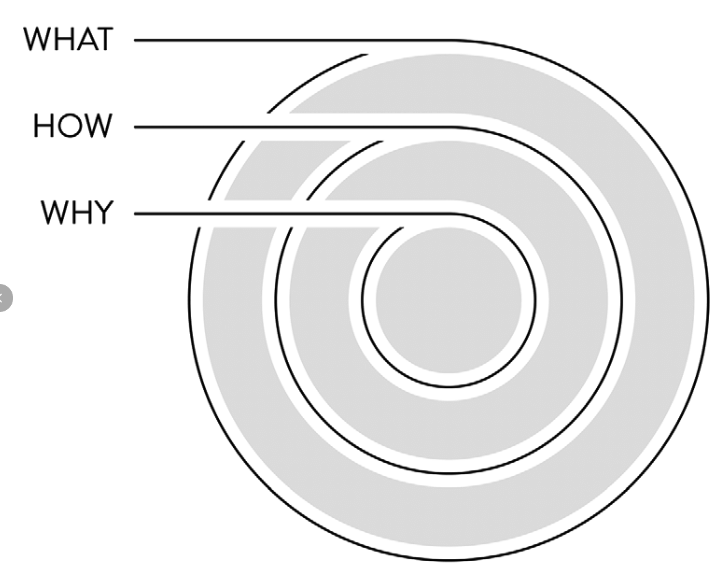What the new generation of consumers signals for the future of brand purpose (and why so many brands are getting it wrong)
The needs and expectations of the next generation of consumers have always challenged the status quo and shown the way for innovation.
The new gen challenges the norms of the one before and it’s marketing’s job to respond to these culture shifts in order to change consumer behaviour. However, the difference with the newest generation of consumers (Gen Z born between 1995 and 2012) is that these disrupting norms are accelerating faster than the industry can keep up with, largely because of our access to cheap and pervasive mobile internet and the post-boom[er] context of rising inequality, climate crisis and rapid globalisation. And so, brand purpose, has become the supposed tonic to our societal ills and an opportunity for capitalism to right itself, to give back to wider society, and for drive value beyond the bottom line and shareholder interest.
So then why are there so many bad examples with no real substance behind them? Why doesn’t brand purpose yet add the true value to the consumers it's supposed to be championing? Perhaps because it is trying to be a fix for an increasingly out-dated model of brand-building - linear, zero sum benefit, focused on the brand’s reason for being rather than being focused on the consumer need or perceived value.
Activism (irl, not from brands) starts with deep, emotional connection to an issue and plays to connected, personal or lived experiences of it. And so if most brand purpose work exists in campaigns and sideline activations away from the centre of a business, and exist to make a brand look good rather than be good, this deep emotional connection will be impossible to fake.
So it’s time to learn from Gen Z, whose commitment to self-improvement and changing the world, its critique of anything less than authentic, its openness to imperfection and its ability to see through tokenism from 100 paces will push brands (and society) forward and show us a better way to create purposeful brands.
I’d like to propose the new rules of brand purpose, as laid down by the next generation of consumers and ready to become the new norm.
1. Change the language
As brand marketers we should be talking more about convictions and promises because a purpose should come from the foundations of a business - its product and organisation - not just from the brand or marketing function. Sure, there is an obvious seat at the table for brand teams when talking about business purpose, but if you’re creating it in isolation of product, customer service or finance, then it probably won’t work because it won’t be truly valuable.
It’s time to start talking about brand beliefs and convictions so we can start building meaningful brands for an audience who actively cancel brands when they don’t deliver on the promises they make. This isn’t a trend that is going to go away - Gen Z are more likely to actually boycott brands (40% compared with 16% of Millennials according to IPSOS) - so we need to take notice.
2. Take your time
When you design your brand purpose, your baseline audience mindset should be the audience who demand consumer value above most else. 69% of Gen Z think brands should help them achieve their goals and over half of Gen Z consumers consider how trustworthy a brand is before buying it. When you design with this demand in mind, you are challenged to seek out what is right for the consumer experience over a strong comms message or brand campaign that will live and die within the month. A strong starting point here is to think about the action your business is taking to create meaning - or the why in your Simon Sinek Golden Circle (below).
Why do you exist as an organisation and (most importantly) then understand the value this has in people’s lives. Then you need to build this value over time, understand it fully, meet real people who experience it and seek it out, collaborate with them, invest in them and then, only then should you talk about it.

3. Avoid the tokenism trap
There is a fine line between representation and tokenism and the difference lies not only in why you’re talking about an issue but how you produce your work and specifically who you work with to make it. When you think about driving forward your brand purpose, you need to think about it from every angle - who is in front of the camera, who is behind it, who is scripting it and ultimately who will see it.
If you are championing women in your latest campaign, give roles to women when you’re producing it; if you’re doing a campaign to celebrate Black History Month, make sure the crew is representative of the Black culture you’re showcasing; if you are focused on helping young people achieve their career ambitions then create work opportunities by bringing them into the production of your platforms and campaigns.
4. Reclaim positivity
As a strategist working on big impact and purpose programmes for brands, the most interesting (and often most complex) element of projects is the need to blend traditional behaviour change thinking with the rules of brand activation. Working with the new generation of consumers pushes us towards positive framing and messaging, empowerment and celebration, rather than using negative messaging because, according to Unicef, it’s more effective for youth audiences. There is data to support this in public policy and health communications and loss aversion is a well-known behavioural norm within behavioural economics.
In our current age of complexity, polarisation and increasing anxiety, the brand work we do at Livity focuses on celebrating the positive experiences of young people, generating long term skills or creative value and facilitating positive interactions between people, in order to have wider social impact. Not only does this create more impactful work, it’s also a joy to make in collaboration with young people.
5. Cherish creative craft
Whilst younger audiences are more comfortable with imperfect, iterative brand messaging, they are also extremely sensitive to visual cues and design, having grown up in a hyper-commercialised world full of ads and branded content. When you put brand purpose work in front of youth audiences for review it often falls flat because of its worthiness, 'greenwashing' or lack of creative vision.
Too often in brand purpose campaigns you can almost hear the strategy screaming out at you rather than being taken to a new and wonderful place with imaginative creative thinking. It’s really good to remember that for every Greta lover, there’s a 15-year-old who is just following what their friends are doing and happily going along for the 'good is the new cool' ride. The opportunity for brand purpose work is that it becomes the most business critical, aspirational and creative work we can do rather than (often) the opposite of that reductive, cliched and false.
Lisa Pike Sheehy, VP of Environmental Activism and Corley Kenna, Director of Global Communications and PR, both at Patagonia
6. Invest in culture
The new gen has far more nuanced and intersectional interests, media choices and identities, so future-facing brand purpose needs to be both a work of both art and science that can play to these nuances rather than “something for everyone”. For brand purpose to work you need to understand the cultural truths and subtleties that you are railing against and/or supporting but most brands grew up just shouting really loudly about themselves so it’s unsurprising that so many of them are getting them wrong.
Most brands don’t exist in culture or try and earn their place there, but are instead obsessed about themselves. In effective brand purpose, or more importantly, socially impactful business, consumer centricity and cultural sensitivity are both critical. We need to think not just about what we say in some ads but how our marketing plans influence what we are investing in, who we are sending the lift down to and the people we are hiring to make our work.



